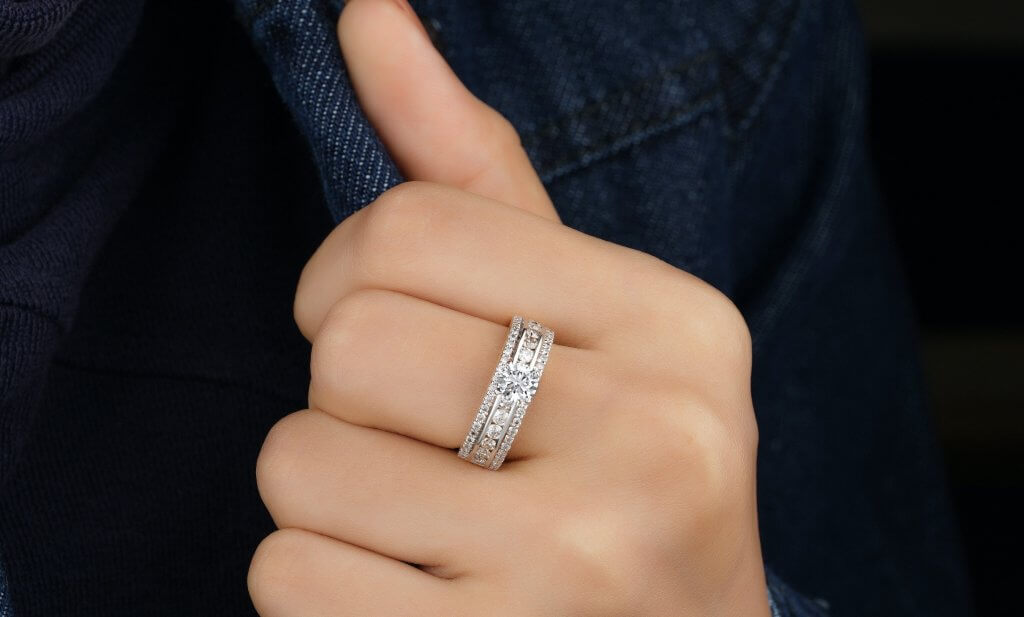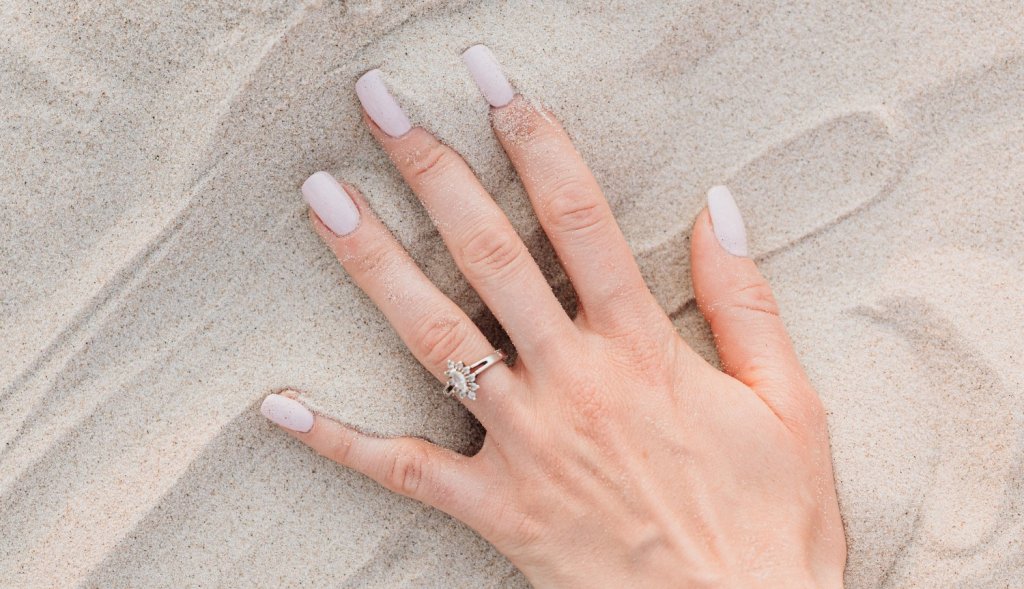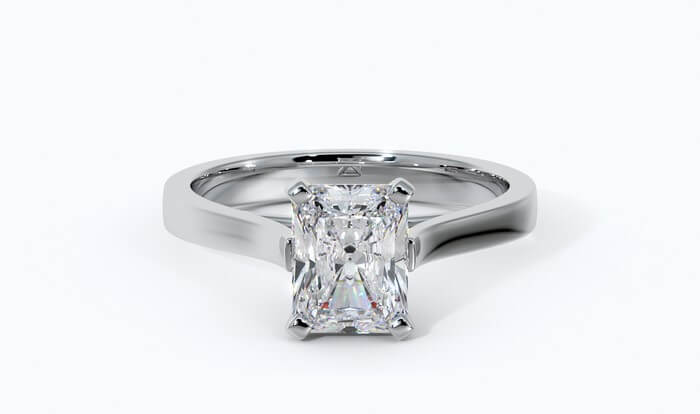4 Prong vs 6 Prong Engagement Rings: Which is Best for You?
Key Takeaways
- Despite being small, prongs are just as important as anything else in an engagement ring.
- They are what holds the diamond in place, ensuring it is tight and secure enough to withstand everyday use.
- A 4 prong ring will keep metalwork to a minimum, with a little less security.
- They will make the diamond look bigger, or at least it will make them look their size.
- A 6 prong ring will add more security, but it can leave less of the diamond exposed.
- This is not to say a 6 prong will ruin the look of your diamond, but that sparkle may be reduced a little.

As small as they are, the prongs on any engagement ring are the only thing keeping that diamond in place, and making sure that, at the end of a long day, you aren’t going to look down and discover an empty space where that irreplaceable diamond once sat.
But, in spite of the task we entrust to them, most of us want our ring’s prongs to remain as barely visible as possible. At the hands of a skilled jeweler, a diamond can be secured in place – tightly enough that you don’t have to look down and check the back of your hand every ten minutes – with the least amount of interference from the metalwork.
Nevertheless, the option is there to add a little extra security into your ring’s design. While four prongs are often seen as the absolute minimum number required, some people naturally lean toward the reassurance (and, at times, structural beauty) that six prongs provide.
On the fence? Here’s where we stand on the 4 prong vs 6 prong debate.
First, What Exactly is a Prong?
A prong is a small piece of metal that overlaps the edge of a gemstone like a claw and holds it tightly in place.
While you can’t see it in a finished ring, the inside of a prong is marked with a small groove. Your diamond’s girdle (the thin, wide point between the crown and the pavilion) sits in that groove. Once in place, the jeweler curls the prong over the edge of the diamond.
When placed correctly, four prongs are sufficient to keep the diamond from slipping out the setting. Even if one were taken away, the diamond could come out relatively easily.
Prongs can also offer protection to the more vulnerable parts of a diamond. The corners of a Princess cut, the sharp point of a Pear cut, or the two ends of a Marquise cut can chip easier than flat or rounded edges, so prongs act as a buffer for these areas.
4 Prong Rings – What are the Benefits?
The biggest benefit to choosing a 4 prong ring is that metalwork is kept to a minimum. While the beauty of an engagement ring isn’t just down to the diamond, most of us want our diamond to be the primary focus – and, given how much they cost, we want to be able to see as much of it as possible.
Sure, two extra prongs aren’t exactly going to obscure your diamond, dull its sparkle, or make your ring look like it’s more metal than diamond. But, for those who decide to go for 4 prongs, the crux of the argument tends to be: if we can get away with 4, why wouldn’t we?
We’re not suggesting that prongs are considered unattractive or undesirable features. And, besides, from a distance a white gold or platinum prong against a white diamond is hardly going to stand out. Even so, having more than you need isn’t a priority for many shoppers, since every prong added means more diamond removed from view.
This brings us to another benefit in favor of 4 prongs: diamonds tend to look bigger – or, in the very least, look their size.
Think about the bezel setting – an extreme example, but still relevant. The bezel covers the outer edge of the diamond’s crown, meaning that it appears smaller than it really is.
Prongs have the same effect, but the upside is that, between each prong, the true size of the diamond is clearly visible. The more prongs you add, the less of the ‘between’ you get, and the harder it is for the eye to take in the full diameter of the diamond.
Then again, there are some instances when you will find that 6 prongs are the better option…
6 Prong Rings – What are the Benefits?
First and foremost, added security. While 4 prongs are often sufficient, some people don’t want to entrust their $5,000, $10,000, or $50,000 diamond (and all its sentimental value) to four very small pieces of metal, however skilled their jeweler may be. After all, it only takes one prong to fail for the diamond to get loose, and some of the more cautious personalities aren’t willing to take those chances.
In turn, this means that the prongs don’t need to be quite so big. We use the term ‘big’ loosely here, because the size difference is very minor – but, on the small scale of a ring, the impact of reducing the size of the prongs is significant.
Also, some people simply prefer the look of a 6 prong engagement ring. The silhouette is very striking and, for some people, sacrificing a little more of the diamond’s visibility is a worthwhile trade-off.
Some shoppers value the look of a 6 prong setting for its resemblance to the highly influential Tiffany Setting – which, as you can probably guess, was introduced and patented by the luxury jeweler Tiffany & Co, way back in the nineteenth century. There is, however, a lot more to the Tiffany Setting than 6 prongs alone, but a couple extra prongs are a nice touch for a jewelry buff.
Does 4 Prong or 6 Prong Make a Diamond Look Better?
It depends on what you value in a ring but, generally, the 4 prong setting will make your diamond look better, simply because it leaves more of it exposed.
The light obstruction caused by two extra prongs is pretty minimal, but there is a small amount of difference in sparkle between a diamond held in place by 4 prongs, and a diamond held in place by 6 prongs.
So, that’s one count in the 4 prong ring’s favor. Another, as we mentioned above, is that 4 prong option often helps the diamond look bigger – and, for a lot of people, finding settings that make diamonds look bigger is a priority.
Also, the definition of some diamond shapes can be lost when there are too many prongs placed around the edge – particularly if they are white gold or platinum, and ‘blend’ with the diamond. This illusion will be broken on closer inspection, but it may bother some wearers more than others.
Are 4 Prongs Safe?
Yes, a well-made 4 prong engagement ring will be safe – but not as safe as a 6 prong ring.
First things first, a good jeweler won’t let you walk out of their store with a ring that’s one good knock away from losing its diamond – or anything close to that. They understand how to keep a diamond safe for daily wear.
Some shapes are a little trickier to set with 4 prongs than others. The Marquise, for instance, is often better off with 6 prongs – one on each of the points, and two on each side. If you’re set on 4 prongs, then they may need to be a little bulkier to ensure the diamond’s safety.
But the crux of the argument is this: if you’ve chosen a reliable and experienced jeweler, and they tell you your diamond is safe in the 4 prong setting they have designed for it, then it will be safe.
Any ring – whether it features 4, 6, or 8 prongs – needs to be checked every 6 months to a year. If your jeweler identifies any weak spots, they can be fixed easily.
Also, keep in mind that a lower karat gold – such as 10K or 14K – will offer more protection than 18 karat gold, just as platinum is a more durable option than white gold.
Our Summary
There’s no definitive answer to the 4 prong vs 6 prong debate. For the most part, it comes down to a combination of personal preference, and the level of trust you think you can invest in these little pieces of metal.
It’s important to remember that 6 prongs, while extra safe, doesn’t have to be a case of ‘function over form’. Their smaller size and regular placement can look very elegant – almost floral, with the right embellishments on the ring’s shank.
But, at the same time, 4 prongs are safe enough, and you don’t have to give into the idea of needing 6 prongs if you don’t want to – unless, of course, your jeweler feels it’s necessary.
Essentially, this is another one of those choices that only you can make, but it certainly pays to know the advantages and disadvantages to your choice.
As always, however, making the right choice rests heavily upon your choice of jeweler. You’ll want to bring up your concerns during your consultation, and trust that they really understand your vision for the ring. Use our Jewelry Store Locator to find someone we personally recommend, local to you, to start making progress with your design.

Mar 12, 2022 By Willyou.net
Channel Settings: The Complete Guide

Mar 13, 2022 By Willyou.net
What is a Diamond Accent? Everything You Need to Know








